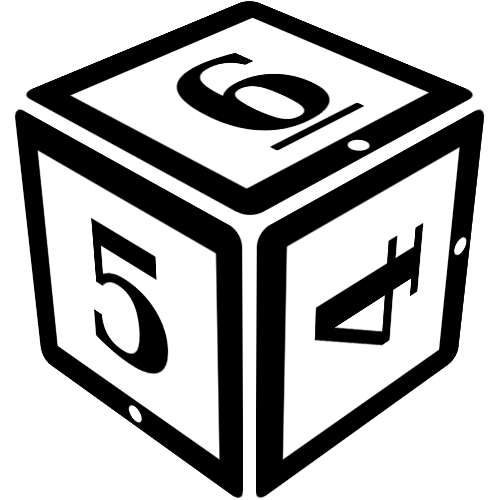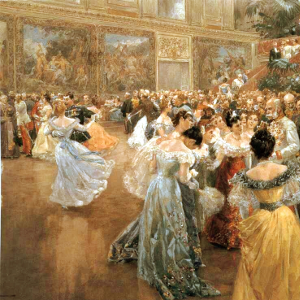Gowns and Ladies' Wear
House Dress: Gowns worn at home around relatives (or very close friends), when not expecting visitors. These gowns are simple and designed for comfort first and foremost, and can usually be put on without any help, though they lack somewhat in elegance.
This category also includes wrappers, morning gowns and other home wear, and the gowns are not suited for outside wear. House Dresses are not considered appropriate attire for social encounters.
Usually worn with a simple piece of personal jewellery
Visiting Dress: Gown worn for informal encounters and meetings with friends and acquaintances. They are of a higher quality, are generally more elaborate and come with varying levels of comfort.
This category also includes tea gowns, receiving gowns and reception dresses. The gowns are not suited for outside or physical activities. Visiting Dresses are the garment of choice for visiting and being visited.
Worn with one or two pieces of simple jewellery.
Lawn Dress: Gowns worn for outside where only minimal physical activity is required. They are generally of very fine quality with elaborate detailing but sacrifice practicality and tend to be delicate.
This category also includes carriage gowns and seaside gowns (not to be confused with swimming attire). The gowns are suited for outside under fair weather conditions, but not for any form of physical activity. Lawn Dresses are the garment of choice for most social events that happen to take place outside such as lawn parties and picnics.
Usually worn with at least one piece of fancy jewellery.
Promenade Dress: Gown worn for outside activities in somewhat civilized environment, where a medium amount of physical activity may be required including such things as climbing into carriages or dodging traffic. They are generally elaborate but resilient in design.
This category also includes traveling gowns, church gowns and street dress as well as certain riding dresses. The gowns are suited for outside under most weather conditions and allow for a moderate amount of physical activity. Promenade Dresses are the garment of choice for strolls, church and traveling by train or carriage and may be worn when riding horses in civilized conditions.
Usually worn with at least one piece of fancy jewellery.
Outside Dress: Gowns worn for outside activities where one is expecting to partake in real physical activities while remaining mobile, or to be protected from serious elemental conditions. They are generally warm and resilient to bad weather and leave the wearer a decent amount of freedom of movement.
This category includes country dresses and hunting dresses, as well as more serious walking gowns and certain kinds of riding gowns, and are suited for all but the most extreme weather conditions while allowing for a full range of activities including such things as rock or tree climbing or mounting a horse unassisted. Outside Dresses are the garment of choice for strolls, and events in the countryside as well as riding on one's own.
Usually worn with a simple piece of personal jewellery
Dinner Dress: Gowns worn for more subdued social events in the evening, such as private dinner parties. These are are designed to be slightly more revealing and generally made out of expensive materials.
This category includes dining gowns and sociable dress, and is considered the equivalent of 'black tie' style. They are generally simple but elegant in design and somewhat more comfortable if not entirely practical, but only for inside wear.
Worn with one or two pieces of simple jewellery.
Theater Gown: Gowns worn for more ostentatious social events in the evening. They are more revealing and are designed in elaborate style with fine detailing.
This category also includes opera gowns (which are different from theater gowns) and are considered the equivalent of 'white tie' style. They are generally elaborate and elegant and not usually comfortable or practical, and only for inside wear.
Worn with at least two pieces of fancy jewellery.
Ball Gown: Gowns worn for the great ball events in society, including dancing and rubbing elbows with the upper echelons of society. They are more revealing and sacrifice comfort and practicality for elegance and finery.
This category also includes gowns for fancy events such as a debutante gown or even a wedding gown. Ball Gowns are strongly subjected to fashion and should be worn with fancy jewellery and hairdo's. They are elaborate, elegant and far less practical than the need to dance in them would suggest.
Worn with at least three pieces of fancy jewellery and often more.
Sports Wear: Gowns designed for specific sports such as a tennis gown. They mix freedom of movement with a certain level of elegance, but are generally only appropriate for the specific activity they are associated with. This category also includes swimming suits but not riding gowns.
Not usually worn with significant jewellery
Suits and Gentleman's Wear
Suit: Suits worn at home or for basic social interaction, including a jacket and comfortable shoes. These suits are relatively simple and design for comfort and practicality.
This category also includes leisure wear like smokings and are designed for informal occasions, though not for outside wear.
Usually worn with a simple piece of personal jewellery
Travel Suit: Suits designed for outside wear, including a coat or greatcoat worn during travel. These outfits are designed to resist the elements and maximize freedom of movement.
This category also includes hunting outfits and military uniforms (except dress uniforms), and are resilient against all but extreme weather conditions.
Worn with one or two pieces of simple jewellery.
Business Suit: Suits worn when attending to business events and tending to official matters during the day. These suits are mostly practical but with a focus on looking good.
This category includes church wear and is resilient to moderate weather and mostly comfortable. It is appropriate for minor events as well as visits to a court of law.
Worn with one or two pieces of simple jewellery.
Dinner Suit: Formal suits worn for official events such as visiting the theater or a dinner party. These outfits tend to not be entirely practical, focusing on appearance over practicality though most still allow a decent amount of freedom of movement.
This category also includes certain dress uniforms and is generally considered to be 'black tie' level, suited for most formal occasions.
Usually worn with at least one piece of fancy jewellery.
Tailcoats: Though the category implies a certain type of outfit, this category includes all outfits of the most fancy nature and generally sacrifices practicality for showing off, being made of expensive materials and featuring fine detailing.
This category includes the likes of tuxedo's, outfits for balls, dress uniforms for high ranking officers and suits for the most formal occasions such as visits to court or levees and is considered to be 'white tie' level.
Worn with at least two pieces of fancy jewellery.
Sports Wear: Outfits designed for specific sports. They mix freedom of movement with a certain level of sophistication, but are generally only appropriate for the specific activity they are associated with. This category also includes swimming suits, but not riding outfits.
Not usually worn with significant jewellery

